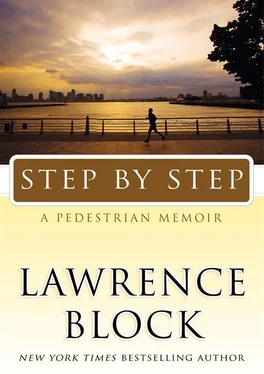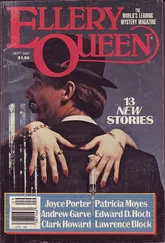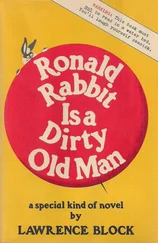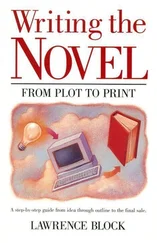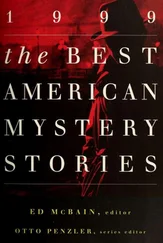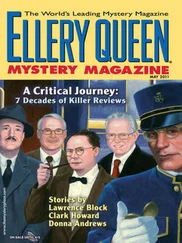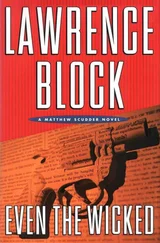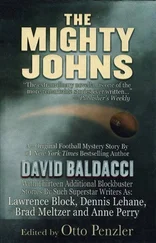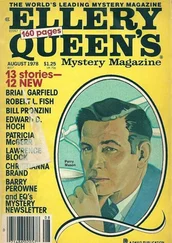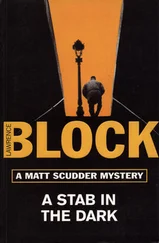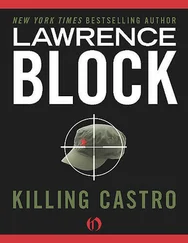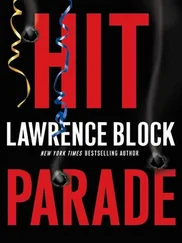Lawrence Block - Step by Step
Здесь есть возможность читать онлайн «Lawrence Block - Step by Step» весь текст электронной книги совершенно бесплатно (целиком полную версию без сокращений). В некоторых случаях можно слушать аудио, скачать через торрент в формате fb2 и присутствует краткое содержание. Год выпуска: 2009, ISBN: 2009, Издательство: William Morrow, Жанр: Биографии и Мемуары, Юмористические книги, на английском языке. Описание произведения, (предисловие) а так же отзывы посетителей доступны на портале библиотеки ЛибКат.
- Название:Step by Step
- Автор:
- Издательство:William Morrow
- Жанр:
- Год:2009
- ISBN:978-0-06-172181-6
- Рейтинг книги:3 / 5. Голосов: 1
-
Избранное:Добавить в избранное
- Отзывы:
-
Ваша оценка:
- 60
- 1
- 2
- 3
- 4
- 5
Step by Step: краткое содержание, описание и аннотация
Предлагаем к чтению аннотацию, описание, краткое содержание или предисловие (зависит от того, что написал сам автор книги «Step by Step»). Если вы не нашли необходимую информацию о книге — напишите в комментариях, мы постараемся отыскать её.
bestselling author comes a touching, insightful, and humorous memoir of an unlikely racewalker and world traveler.
Step by Step — читать онлайн бесплатно полную книгу (весь текст) целиком
Ниже представлен текст книги, разбитый по страницам. Система сохранения места последней прочитанной страницы, позволяет с удобством читать онлайн бесплатно книгу «Step by Step», без необходимости каждый раз заново искать на чём Вы остановились. Поставьте закладку, и сможете в любой момент перейти на страницу, на которой закончили чтение.
Интервал:
Закладка:
Nor did the pain suddenly abate, enabling me to change my mind. My feet were sore and they stayed that way.
The organizers of the race were well aware that not everyone would be able to go the distance, and they had a bus or two that swept the tail end of the field, picking up whatever stragglers had sensibly concluded that enough was enough. Once you were past the thirteen-mile mark, the midpoint of the race, you were on your own; if you wanted to drop out, you could hop on the Underground or hail a cab.
I kept walking, past the three-mile mark, past the five-mile mark, and on. I kept telling myself I’d drop out soon, and as I got closer and closer to Tower Bridge, I knew it was time to give up.
Then I saw the bridge, and realized I was halfway there. I kept going and crossed the bridge, and it struck me for the first time that I might actually be able to finish this thing. Because my feet didn’t feel any worse than they had at the start, and they couldn’t get any wetter than they already were, because even cotton can only hold so much water.
Two miles beyond Tower Bridge, we had a loop of about six miles around the Isle of Dogs. There weren’t any dogs to be seen, or much of anything else; it was in those days an unappetizing patch of urban wasteland. It was also the last part of the course that I can remember. The finish was at Constitution Hill — they changed that the following year — but I don’t know how we got there. I paid just enough attention to the route to stay on it.
There was one point very near the end where the course led across a vast intersection, and traffic controls at that stage of the race were somewhat lax. In the interest of self-preservation, I forced myself into a raggedy-ass run across that fifty-yard stretch of pavement, but with that exception I walked all the way.
A mile or so from the finish I heard my name called, and looked up to see my good friend Pat Trese; he was in town on business and showed up to cheer me on. That helped me pick up the pace, and I crossed the line with an official time of 5:22:37.
I was sore the next couple of days, but not terribly so, and on Wednesday I took a train and a bus to Glastonbury, where I spent a couple of days walking around and climbing the High Tor. Then I flew home and got back to the business of racing.
I must have done other things that year. I wrote a monthly column for Writers Digest and ghosted a first draft of a screenplay, I contributed four songs to an off-Broadway revue, and in the fall I wrote a long novel, Eight Million Ways to Die . I got out of one relationship and, after a brief interval, got into another. I flew to Europe and back twice, took a batch of westbound buses, and flew home from Los Angeles. It was, all things considered, a fairly busy year, but when I look at the record it seems to me that all I did was race.
In 1981 I took part in forty races, including five marathons and adding up to 374.5 miles.
One of the first things I did after returning from London was sign up for the Madrid Marathon. New York Road Runners was offering a package tour, including airfare, a week in a downtown hotel, and race registration. I entered, and took along my daughter Jill, who would turn eighteen a week or two after the race. There were eight or ten other members of the New York contingent, including two elite runners, Gillian Adams and Odis Sanders, whose entries were sponsored by NYRR.
I managed to fit in seven races between London and Madrid. I walked four of them and, because my knee seemed to have recovered, ran three. Walking, after all, was something I’d embraced out of need, and if the need no longer existed, why not run? It was certainly faster, by around three minutes a mile in a short race.
In Madrid I trained some in the Retiro, a well-landscaped park that smelled uncannily like a cat box. Jill, who’d run a few races in Central Park, had thought she might try running the marathon, but decided watching it was enough of a challenge, so Sunday morning she remained a spectator while I lined up with the other entrants.
My keenest memory of the race was the utter bafflement of the few Madrileños who actually got a glimpse of it. Madrid is a city where the bulk of the population sits down to dinner around midnight before partying until four or five in the morning. Consequently we ran through empty streets, lined not with crowds of cheering spectators but with essentially empty sidewalks. Now and then there’d be a few people on a corner waiting for the light to change, but all they did was stare at us. This was the fourth year of the Madrid Marathon, but it hadn’t yet caught on with the general public, and you could see these folks didn’t have a clue what we were doing, or why we were doing it.
That was okay with me. I wasn’t really any more interested in them than they were in me. I ran past some imposing public buildings, but I didn’t care about them, either. I just kept on running, and then my knee started to hurt.
So I ran for as long as I could, and somewhere around the sixteen-mile mark (though it would have been posted in kilometers) I switched to racewalking and wrapped up the final ten miles that way. My time was 4:43:23, which was thirty-nine minutes faster than London, but you couldn’t really compare the two times because one was pure walking and the other was a run-walk mix. Still, it was a faster time than I’d had before, and a second marathon completed, and I felt good about it.
Gillian and Odis were the marathon’s two winners, which was no huge surprise; they were the event’s world-class entrants, and fulfilled expectations. We all celebrated their victory and our collective triumph, and then Jill and I treated ourselves to two days in Barcelona before flying back to New York.
On May 31, I took the subway to Queens and ran a 10K race in Forest Park. Then I went home and packed my suitcase, and shortly after midnight I showed up at the main post office at Eighth Avenue and Thirty-fourth Street and dropped an envelope in the slot. It contained my entry for the New York City Marathon, which had to be postmarked on or after June 1. Entry was by lottery, and having the earliest June postmark didn’t do anything to assure acceptance, but as soon as I mailed my application I was free to leave town.
I went directly from the post office to the Greyhound station, sat on a bench for two hours, and then boarded a bus for Columbus, Ohio.
I’d been living with a woman since the fall of 1977, and after three and a half years it was pretty clear that we were done with each other. In New York City, however, it’s easy to postpone the final break in a relationship, especially when there’s a rent-stabilized apartment involved. A kind of inertia comes into play, with each party perfectly willing to have the other move out, but neither much inclined to move on one’s own.
That spring we received a notice that our building was going co-op, and that we would have the opportunity to either buy our apartment or stay on as statutory tenants. I couldn’t afford to buy anything, and it seemed like the right time to make a break, so we agreed that she would stay on in the apartment while I would leave my worldly goods there until the fall, when I would remove them to whatever new lodgings I’d manage to find.
As of the first of June, I’d no longer have a place to live, or rent to pay. Nor would I have any pressing reason to hunt for a new apartment for the next three months or so. What a perfect opportunity, then, to go see something of the country — and, while I was at it, run across as much of it as possible.
Running Times was quick to assure me that there were races every weekend all over America, including those parts of it I’d not yet managed to visit. I didn’t have a car, but neither did I need one. I was perfectly happy to leave the driving to Greyhound, as their commercials suggested I do, and I even used the line in a song:
Читать дальшеИнтервал:
Закладка:
Похожие книги на «Step by Step»
Представляем Вашему вниманию похожие книги на «Step by Step» списком для выбора. Мы отобрали схожую по названию и смыслу литературу в надежде предоставить читателям больше вариантов отыскать новые, интересные, ещё непрочитанные произведения.
Обсуждение, отзывы о книге «Step by Step» и просто собственные мнения читателей. Оставьте ваши комментарии, напишите, что Вы думаете о произведении, его смысле или главных героях. Укажите что конкретно понравилось, а что нет, и почему Вы так считаете.
